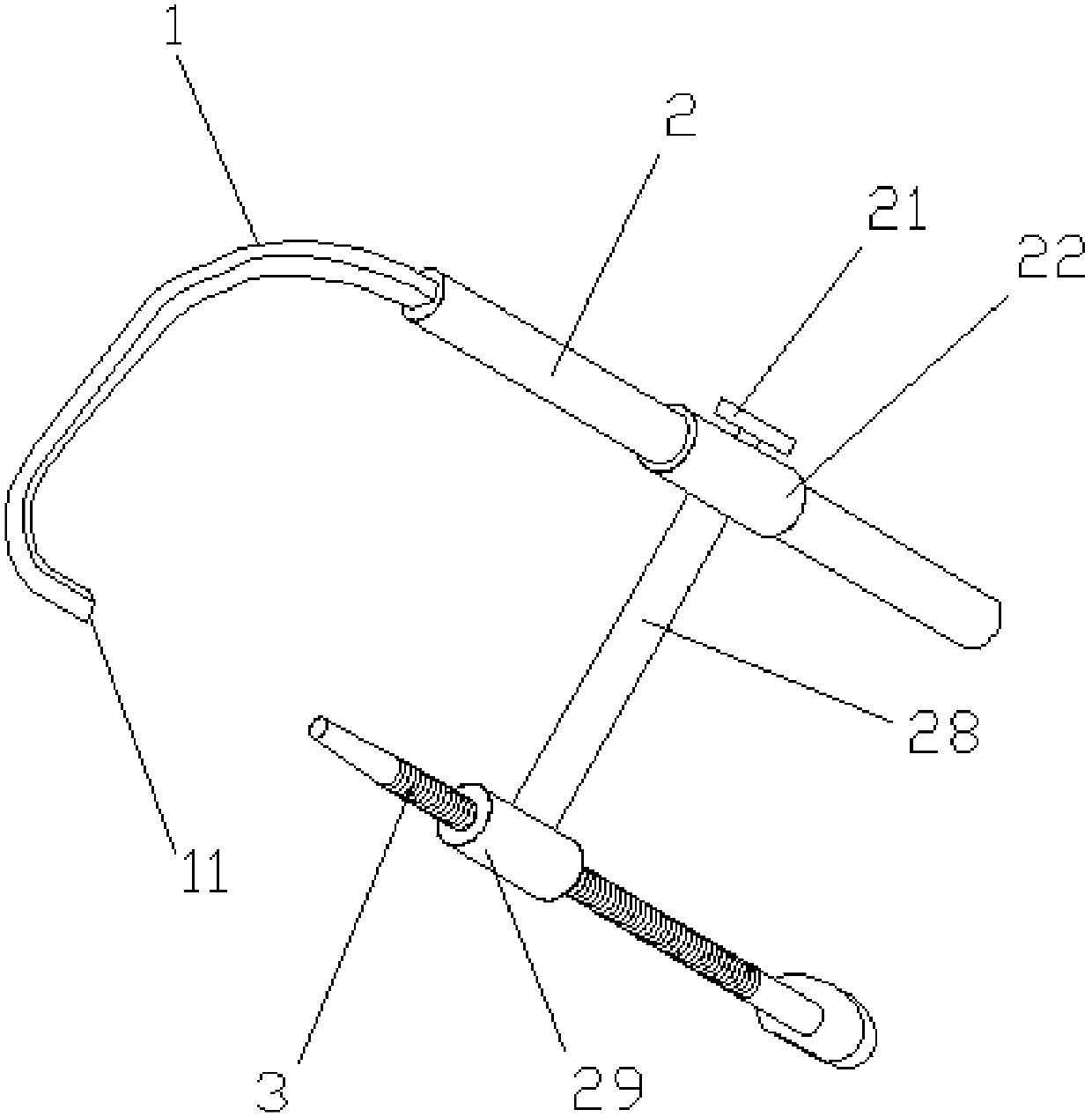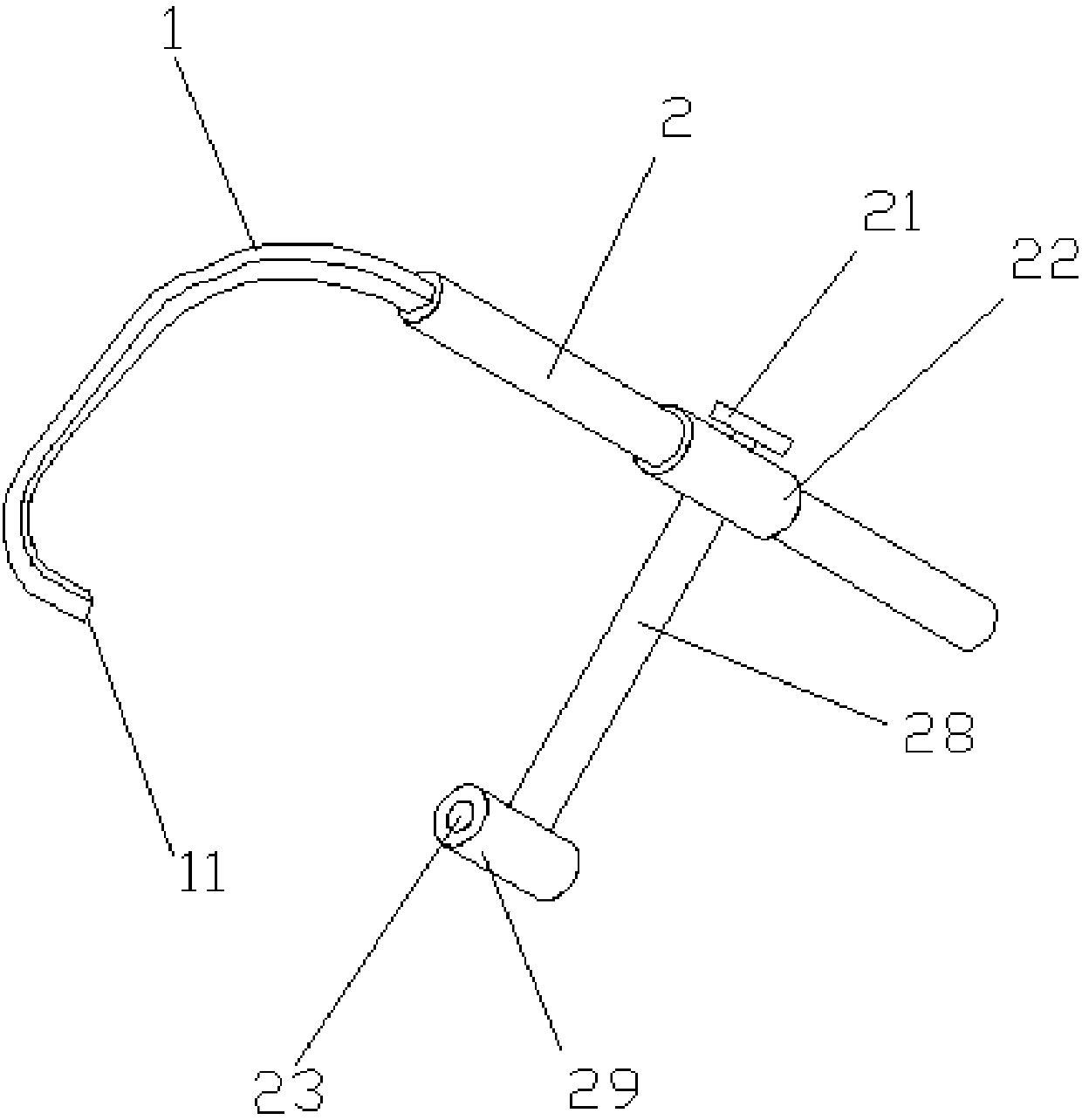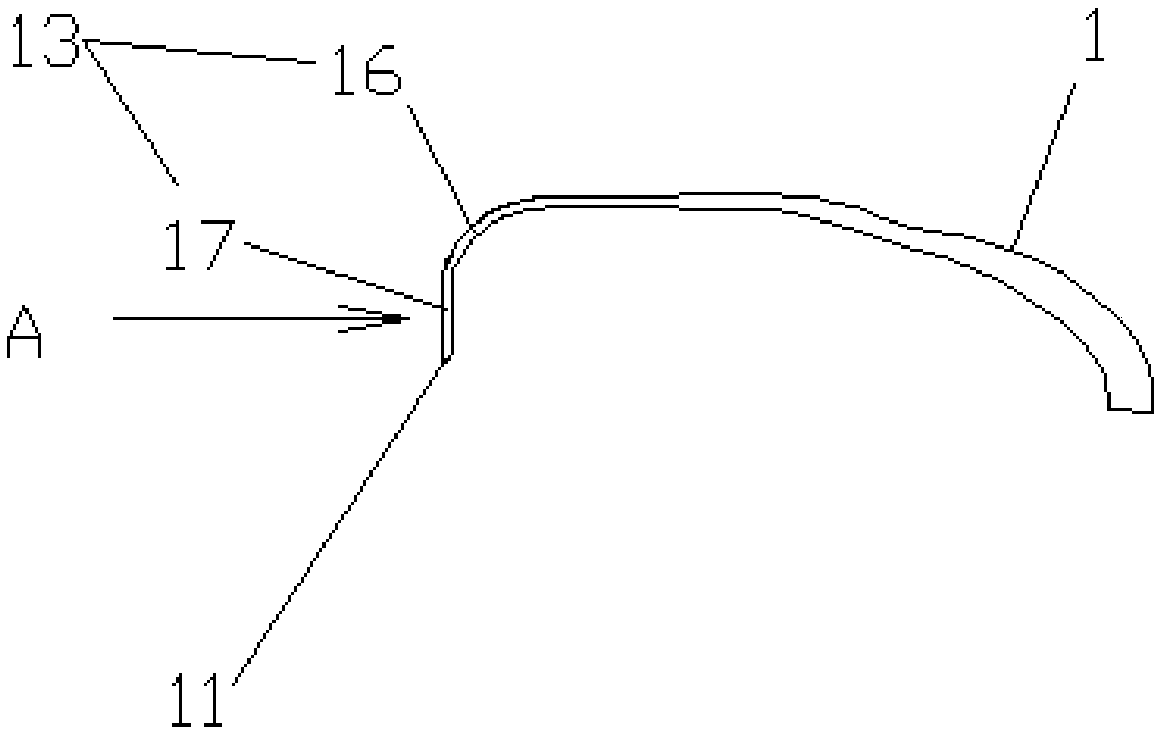Tunable with posterior cruciate ligament reconstruction tibia positioning device on dissection force line axis extension cord
A technology of cruciate ligaments and extension wires, which is applied in the field of medical devices, can solve the problems that the anatomical structure cannot be fitted, the locator cannot reach the anatomical stop, and the locator is prone to shift and loosen, etc., so as to reduce wear and tear. The effect of "kill angle" effect
- Summary
- Abstract
- Description
- Claims
- Application Information
AI Technical Summary
Problems solved by technology
Method used
Image
Examples
Embodiment 1
[0047] Such as figure 1 , 2 As shown in . and 3, the adjustable anatomical force axis extension line disclosed in the present embodiment is the posterior cruciate ligament reconstruction tibial positioner, comprising a positioning arm 1, a handle 2 and a guide rod 3, and the front end of the positioning arm 1 is a positioning probe hook 13 for positioning The front end of the probe hook 13 is a positioning tip 11, the rear end of the positioning arm 1 is fixedly connected to the front end of the handle 2, the handle 2 is provided with a slider 22, and the slider 22 has a locking device 21 for locking the slider 22. One end of the support rod 28 is affixed to the slide block 22, and the other end of the support rod 28 is affixed to the guide block 29, and the guide block 29 is provided with a guide hole 23; The axis of the guide hole 23 passes through the positioning tip 11 . One end of the guide rod 3 passes through the guide hole 23 and docks with the positioning tip 11 . ...
Embodiment 2
[0052] The difference between this embodiment and embodiment 1 is: as Figure 6 , 7 As shown, the guide block 29 is provided with a slot 25, and the insert block 24 is inserted in the slot 25, and the guide hole 23 is arranged on the insert block 24.
[0053] Such as Figure 8 , 9 As shown, the guide hole 23 in the insert block 24 is not offset, and the insert block 24 of this structure is adapted to the positioning arm 1 whose positioning tip 11 is not sideways. Such as Figure 10 , 11 As shown, the guide hole 23 in the insert block 24 is left biased, and the insert block 24 of this structure and Figure 5 The positioning tip 11 in the adapter is adapted. Such as Figure 12 , 13 As shown, the guide hole 23 in the insert block 24 is biased to the right, and the insert block 24 of this structure and Figure 4 The positioning tip 11 in the adapter is adapted.
[0054] There is a locking mechanism for locking the plug 24 on the guide block 29. The locking mechanism incl...
Embodiment 3
[0057] The difference between this embodiment and embodiment 2 is: as Figure 14 , 15 As shown, the positioning arm 1 is divided into two parts, one part is a positioning probe hook 13 including a positioning tip 11, and the two parts are screwed together. The rear end of the positioning probe hook 13 has an extended connecting arm 14, and the connecting arm 14 has external threads; the front end of the other part corresponding to it has an adapted threaded hole 15.
[0058] Such as Figure 16 As shown, the positioning probe hook with the positioning tip 11 not sideways, which is the same as Figure 8 and 9 Insert block 24 fits as shown; as Figure 17 As shown, the positioning probing hook with the positioning tip 11 to the left is similar to Figure 10 and 11 Insert block 24 shown fits. Such as Figure 18 As shown, the positioning probing hook with the positioning tip 11 to the right, which is the same as Figure 12 and 13 Insert block 24 shown fits. In this embodi...
PUM
 Login to View More
Login to View More Abstract
Description
Claims
Application Information
 Login to View More
Login to View More - R&D
- Intellectual Property
- Life Sciences
- Materials
- Tech Scout
- Unparalleled Data Quality
- Higher Quality Content
- 60% Fewer Hallucinations
Browse by: Latest US Patents, China's latest patents, Technical Efficacy Thesaurus, Application Domain, Technology Topic, Popular Technical Reports.
© 2025 PatSnap. All rights reserved.Legal|Privacy policy|Modern Slavery Act Transparency Statement|Sitemap|About US| Contact US: help@patsnap.com



